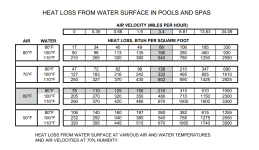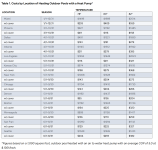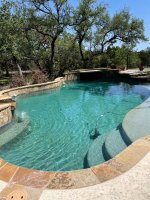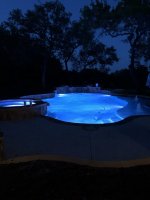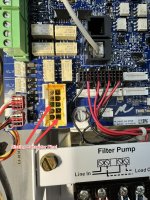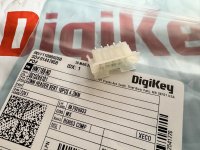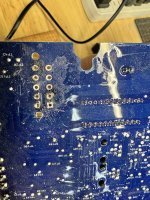Hello all,
Apologies in advance for the long post.
I'm puzzled by the water flow in my pool's plumbing. When the main pump is running, all appears well, with no leaks visible anywhere near the exposed plumbing around the filter, pump, etc. I seldom need to add water except when it gets really hot, dry, or windy.
When the main pump is off, I hear gurgling sounds that suggest water is flowing out of the filter, back through the skimmer basket, and out to the pool, but I can't detect where in the pool any water is entering. Moreover, air is entering the water lines during this process. After sitting overnight, the skimmer basket has water up to the level of the input from the pool; i.e., it drains until it can't drain any more, with air filling the remainder of the basket. The gurgling sounds have stopped; no more water is running out of the filter. When the pump comes back on, it needs to re-prime itself, and every couple days or so, I have to bleed air out of the filter.
If I open the bleed valve on the top of the filter while the pump is off, air is sucked into the top of the filter as the water drains from it.
I'm trying to figure out where the air is entering the system and where the water from the filter is going when the pump is off, so I can "fix" it. Try as I might, I'm not getting it figured out, so I thought I'd stop by here to see if any of the experts can "solve" the puzzle for me.
I've attached a picture, below, of my exposed plumbing for reference.
View attachment 631798
Numbers in the picture correspond to water flows as follows:
1. Filter to heater
2. Filter from pump
3. Heater to pool and spa
4. To spa
5. To pool, fountain, vacuum
6. To fountain (note there is a check valve in this line)
7. Spa bubbler/blower (no water)
8. To fountain, after check valve (continuation of 6)
9. To pool, vacuum pump
10. To vacuum pump
11. To vacuum
12. Spa drain, pool skimmer basket, main drain to pump skimmer basket
13. From spa drain
14. From pool main drain
15. From pool skimmer basket
I've tried opening and closing various combinations of the Jandy valves when the pump is off and I get, to me, very confusing results. Examples follow.
If I close the valve at 12, presumably I cut off all flow back to the pool from the pump, but when I do, flow continues out of the filter!
If I close that same Jandy valve to 14 and 15, then flow stops. If I move that valve back to 12 and close the Jandy valve at 15 (theoretically prohibiting flow to both the pool skimmer basket an main drain, flow continues!
I've tried a few more combinations, but I'll stop here to seek any input or advice you folks might have. I'm willing to call in our pool service, but I really want to try to figure out what's going on, if I can, before I do.
Thanks for any insight.




